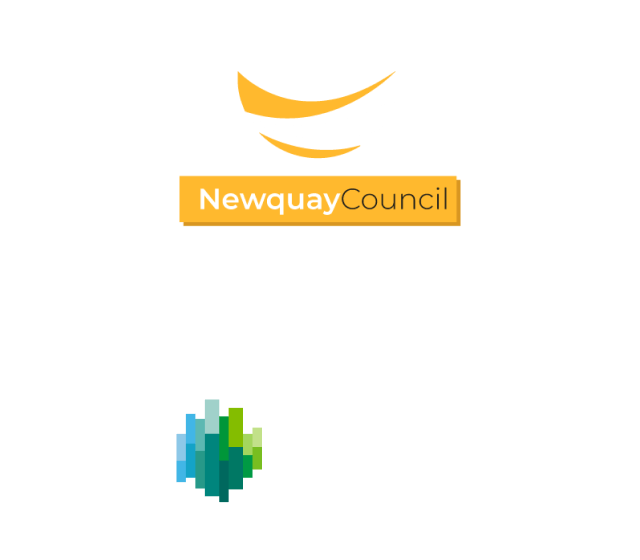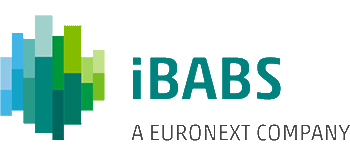What is a meeting agenda?
A meeting agenda lists the running order of the meeting, outlining the topics for discussion and designating responsibility to those who will lead each section of the meeting. It is usually written in chronological order, starting with the opening of the meeting and then laying out which subjects will be tackled and when, before noting any other business and closing of the meeting.
Many organisations base their agendas on Robert’s Rules of Order, which sets out a specific running order for meetings. However, the agenda for meetings can vary from organisation to organisation. They generally contain timings for topics, descriptions of the agenda items and references to additional materials that are relevant to the subjects under discussion.
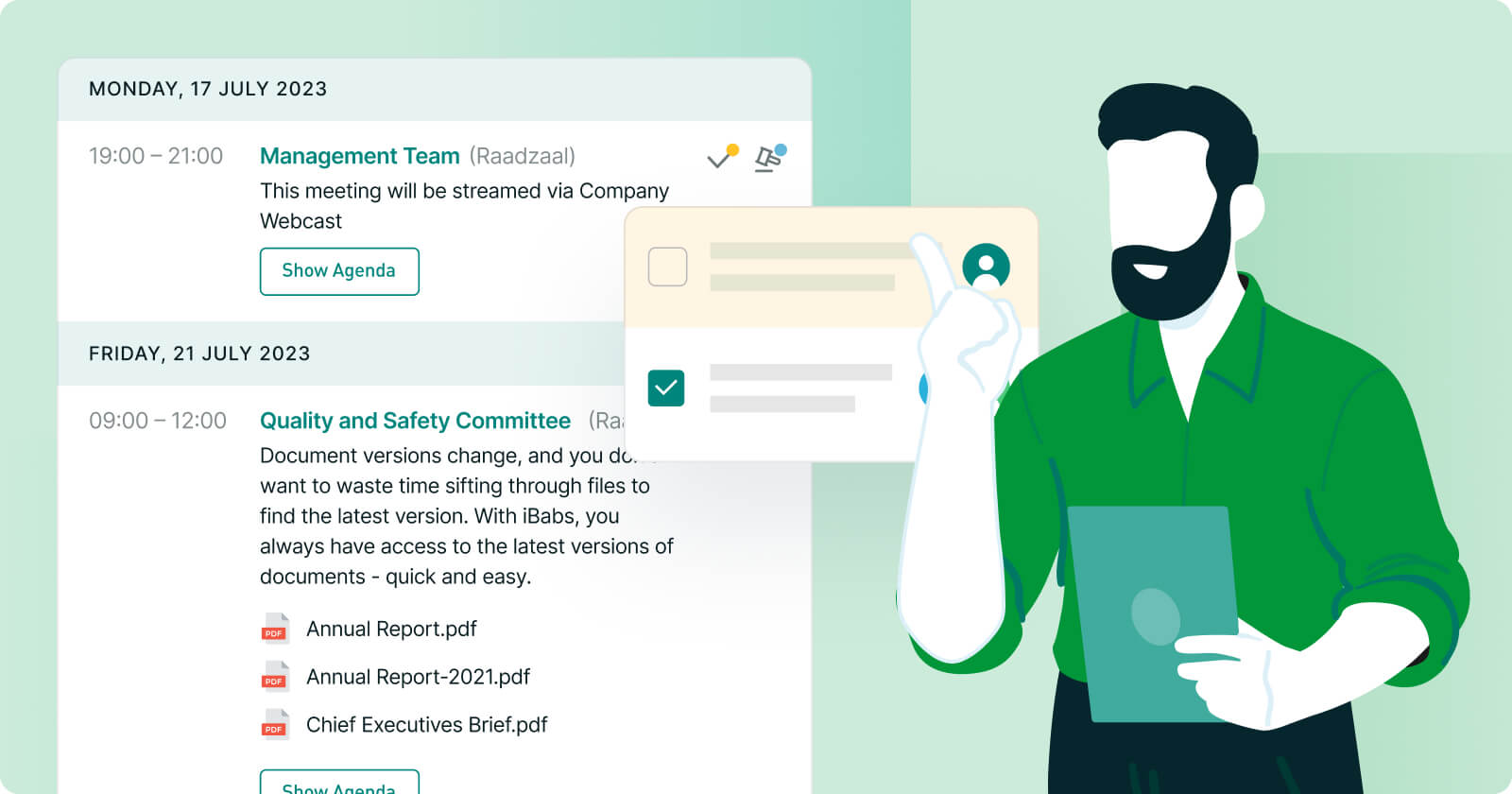
Meeting agenda templates
iBabs has created templates for different types of meeting agendas. These will help guide you towards creating intuitive and clear agendas that help you meet your objectives.

This is a highly structured type of meeting that guides the strategy of the company, making a clear and comprehensive agenda essential.
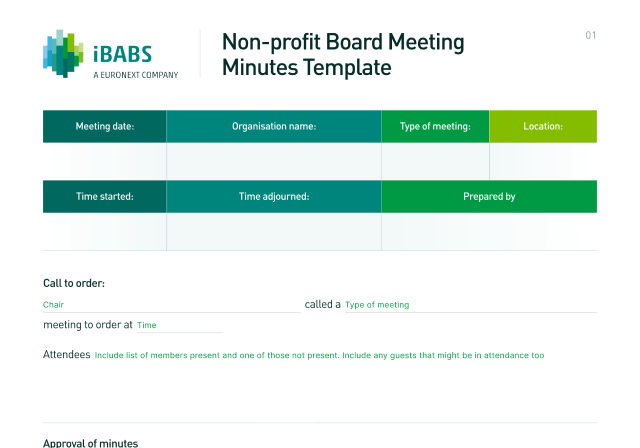
Board meetings at non-profits tend to cover a wide range of topics. The agenda should guide trustees through all of these important topics.
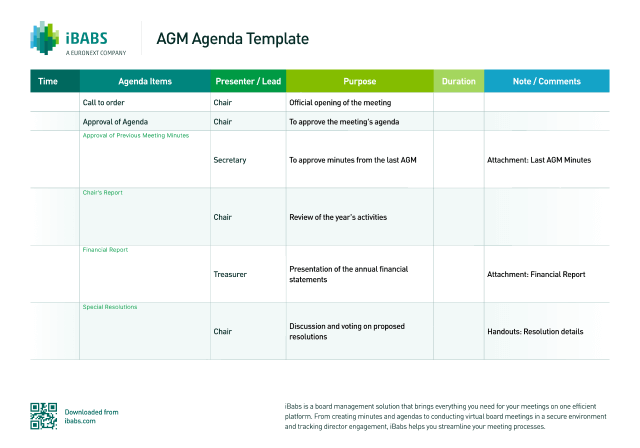
The AGM is a key event when investors get to hold directors to account. As such, a structured agenda that allows for full and frank discussion is essential.
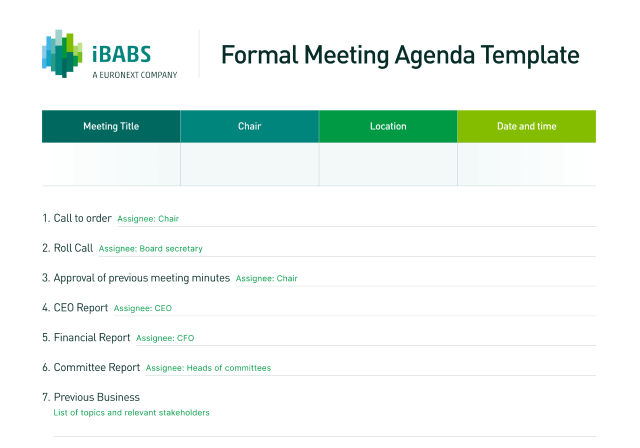
With formal meetings, there is a range of important topics that need to be discussed and a well-structured agenda helps to keep the momentum going.
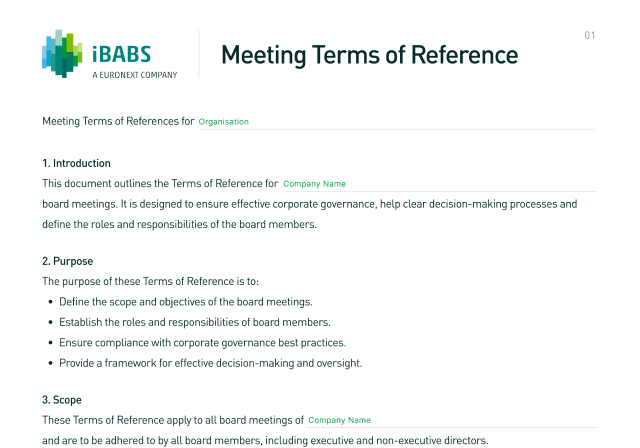
Meeting terms of reference usually include the objectives, the people who are designated to make them happen, the decision-making process and the timeline for achieving the aims.
iBabs board portal provides an agenda builder tool to help you create an effective and streamlined running order for your meetings with ease. You can easily turn this into a fully formatted document with your organisation’s logo and share it with participants directly in the cloud where they can collaborate and add comments.
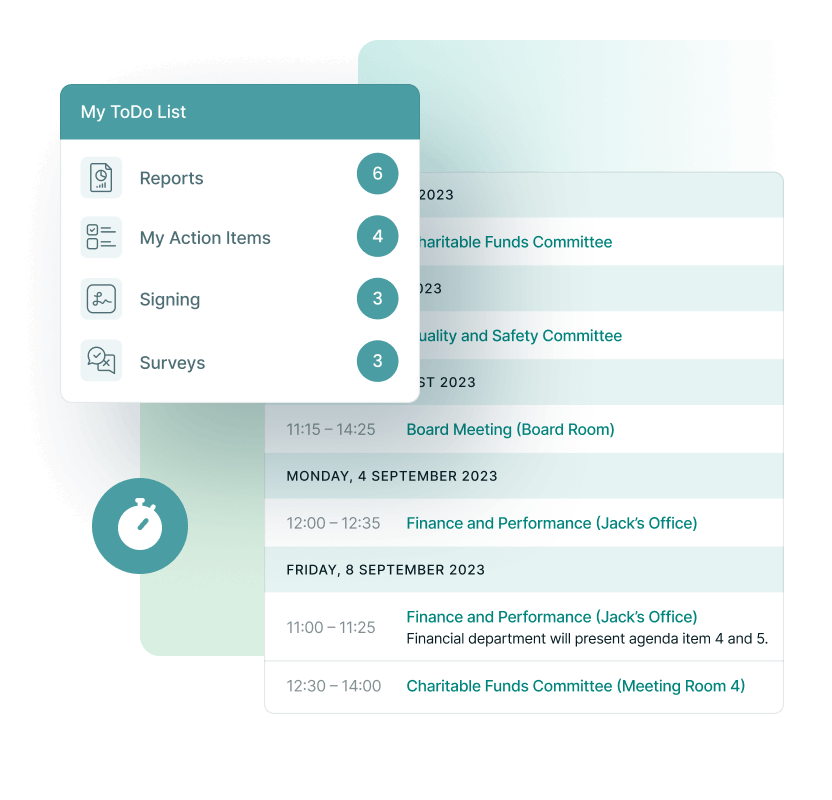
How to write an effective meeting agenda
By creating a standard workflow for creating your agenda, you can ensure you produce a robust document that helps you hold effective meetings. Below is a typical process for creating and distributing the document in a manner that will allow for better discussions and well-informed decisions.
iBabs board portal allows you to attach links from the agenda to the supporting documents. This means attendees have access to all the information they need on all their devices. All your documents are securely stored in a secure online board portal and you can easily find what you need using the search functionality.
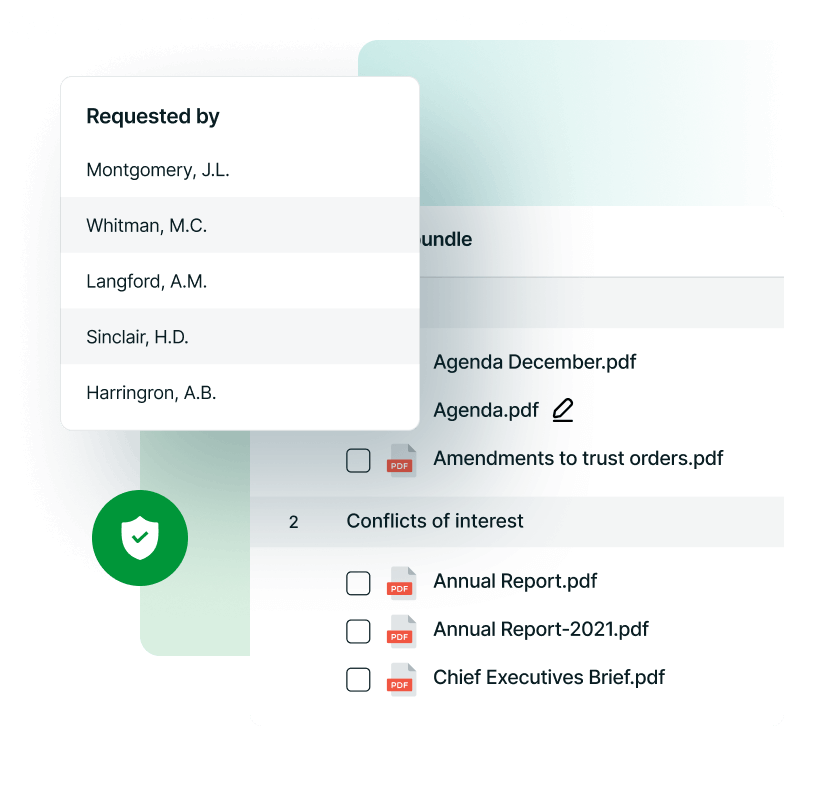
Meeting agenda formatting
Here are the essential items to include in the meeting agenda
| Item | Explanation |
| Meeting objectives | Help attendees understand what the meeting is intended to achieve. This enables them to prepare better and tells them what to expect. |
| List of topics to discuss | Knowing the topics for discussion allows the attendees to research them, formulate their opinions and work out potential solutions to problems that they can bring to the table. |
| Time allotted for each topic | Our time is precious and having the timings on the agenda lets attendees plan their days more easily. |
| Meeting participants’ roles and responsibilities | If someone is expected to play a role in running the meeting, let them know in advance so they can prepare their input. List the chair and topic leaders here. |
| Documents or reports to review | Save meeting time by providing supporting documents in advance, allowing participants to get up to speed before the discussion takes place. |
| Details of any pre-meeting tasks | If attendees need to carry out tasks ahead of the meeting, note it down to ensure everyone is ready to give their input on the day. |
The organisation conducts seven meetings per month. With iBabs, they are now able to prepare for a meeting in one hour instead of seven. This means that they save six full work days every month.
